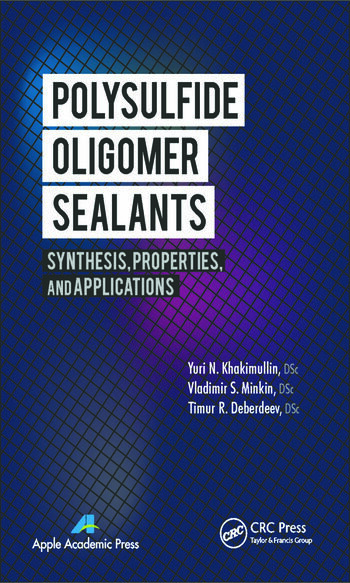Freedonia Group Predicts Adhesives and Sealants Market to Reach $81 Billion by 2025

The Freedonia Group has released Global Adhesives & Sealants, a report detailing the market’s increasing focus on sustainability, the strong potential in the Asia/Pacific region, and the opportunities in the water-based, reactive, and hot melt segments. According to the report, the Freedonia Group projects the global demand for adhesives and sealants to grow 3.4% per year to 24.7 million metric tons, valued at $81 billion in 2025. The gains will reportedly be supported by: rising construction activity and infrastructure investment in developing countries, boosted in the short term by rebounds from losses seen during the COVID-19 pandemic; an increase in manufacturing output, most notably of transportation equipment, and ongoing increases in manufacturing activity of consumer goods in emerging economies; and the continuing transition in manufacturing, assembly, and construction from mechanical fasteners to adhesive bonding.
The Freedonia Group projects the Asia/Pacific region to account for over 70% of global volume demand growth between 2020 and 2025. According to the report, expanding manufacturing output will fuel sales gains across a number of major markets in the region, boosting adhesives and sealants use in packaging, tapes and labels, motor vehicles, electronics, and footwear, among other applications.
The group finds that China’s global dominance in a number of key end-use industries–including appliances, electronics, footwear, furniture, machinery, and packaging–will continue to bolster the country’s position as the world’s top consumer of adhesives and sealants. In emerging economies in the region, suppliers of packaging adhesives will benefit from rising demand for packaged consumer goods, supported by growing urban populations and improving disposable income levels. A rebound in motor vehicle production in Japan and South Korea will support demand in these countries.
While the group expects China to account for half of Asia/Pacific market gains through 2025, the reports indicate faster growth is occurring in India, Indonesia, Thailand, and other countries with developing manufacturing sectors. Reactive adhesives and sealants, which are commonly used as epoxies in electrical and electronic products, particularly stand to benefit. According to the report, India will see the most rapid advances of any major national market globally, boosted by rising public infrastructure spending, which will drive strong growth in domestic construction activity (and related adhesives and sealants use), and domestic sales of motor vehicles, which will fuel output and capacity expansions by major automakers in the country.
Water-Based, Reactive, and Hot Melt Adhesives and Sealants
The Freedonia Group finds that, while water-based products will remain the most used product in 2025–accounting for nearly one-third of all demand–reactive and hot melt adhesives and sealants are expected to have some of the best opportunities. The report states gains for reactive products will be supported by solid growth in construction activity and motor vehicle production, markets where the superior performance properties of reactive products are preferred and sealing is becoming more important. Gains in motor vehicles in particular will benefit from a significant recovery in manufacturing from a low base during 2020 and 2021.
The group reports that hot melt demand will be bolstered by the growing textile market, where they continue to replace conventional stitching in hems due to their rapid cure rates. Use of nonwoven products, such as wipes and masks, surged during 2020 and 2021, and these rates are expected to remain elevated. The market for personal hygiene products is expanding in both developed countries with aging populations and in developing economies where personal incomes are rising.
Additionally, the group reports that water-based products will remain popular due to their relatively low cost, ease of use, and low emissions, which make them more environmentally friendly than solvent-based products. While water-based products already tend to be favored in developed areas where consumers have concerns about contaminants and there are regulations in place monitoring their use, they are likely to gain ground in developing areas as consumers in those areas are also able to specify such products.
Increasing Focus on Sustainability
As the importance of sustainability continues to grow across industries, leading adhesives and sealants producers are increasing their focus on developing products that will reduce the carbon footprint of their own production activities as well as those of their end users. According to the Freedonia Group’s analysis, this is having a growing impact on product mix in numerous segments of the global adhesives and sealants market, from packaging to footwear. The group highlighted the following key areas of innovation in sustainable adhesives and sealants:
Recyclable and Recycled Adhesives–Because the adhesives used to make many packaging items are often unrecyclable, manufacturers have increasingly turned to recycling compatible adhesives (RCAs). RCAs are hot melt pressure sensitive adhesives for paper-to-paper bonding that degrade into relatively large particles during the pulping process. The particles can then be removed via slotted screens and flotation processes. RCAs can enable adhesive removal efficiencies as high as 99%. Additionally, adhesives manufacturers are developing products that are amenable to plastic film recycling processes.
Biodegradable Adhesives–Biodegradable adhesives are another means to improve the sustainability of packaging and other products. Such adhesives, which are generally made from natural substances, are formulated to be broken down by bacteria and other organisms into carbon dioxide (CO2), water, and other natural gasses. Biodegradable adhesives typically find use in packaging, hygiene products, envelopes, and medical devices.
Compostable Adhesives–Compostable adhesives are biodegradable adhesives that degrade in the controlled conditions of a compost pile (typically at an industrial composting facility). Once broken down, the remaining carbon dioxide and other natural substances enrich the compost soil. In order to be certified as compostable, at least 90% of the adhesive must decompose after 90 days into CO2 and water vapor. The remaining portion of the adhesive must not impair the quality of the compost soil since the soil must be able to support plant life. In the United States, the Biodegradable Products Institute (BPI) is responsible for officially certifying a product as compostable.
Repulpable Adhesives–Repulpable adhesives dissolve completely in water during paper repulping operations, without leaving a contaminating residue on the paper fiber. These adhesives, which often incorporate acrylic acid, are typically used in corrugated boxes, envelopes, and other paper-based packaging.
Renewable/Bio-based Adhesives–Renewable/bio-based adhesives are made from renewable materials (such as plants) and contain no petroleum products. Typical renewable/bio-based adhesives are made from such substances as sugarcane, cellulose, proteins (e.g., casein), and starches. Adhesives made from renewable materials are often favored for single-use packaging, as they enable the packaging to be more easily recycled or composted.
Global Adhesives & Sealants provides historical data (2010, 2015, and 2020) and forecasts for 2025 and 2030 for global adhesives and sealants demand in metric tons and current U.S. dollars (including inflation) at the global, regional, and country levels. Demand is presented by market and product type.
Markets include construction, packaging, tapes and labels, consumer goods, transportation equipment, textiles, and other markets ((e.g., appliances, electrical and electronic product manufacturing, furniture assembly, machinery production, etc.).
Product types include water-based, solvent-based, reactive, hot melts, natural (e.g., cellulosic adhesives, protein adhesives, vegetable oil-based sealants), and other products (e.g., bituminous, sodium silicate, polyvinyl butyral).
For more information, visit: www.freedoniagroup.com.
Looking for a reprint of this article?
From high-res PDFs to custom plaques, order your copy today!






